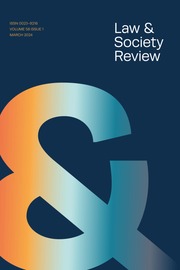Article contents
Human Rights Prosecutions and the Participation Rights of Victims in Latin America
Published online by Cambridge University Press: 01 January 2024
Abstract
Since the 1980s, there has been a significant rise in domestic and international efforts to enforce individual criminal accountability for human rights violations through trials, but we still lack complete explanations for the emergence of this trend and the variation observed in the use of human rights prosecutions in the world. In this article, we examine the role that procedural law has had in allowing societal actors to influence in this rising trend for individual criminal accountability. We do this by focusing on participation rights granted to victims, such as private prosecution in criminal cases. Based on an exploration of an original database on human rights prosecutions in Latin America and fieldwork research in three countries, we argue that private prosecution is the key causal mechanism that allows societal actors to fight in domestic courts for individual criminal accountability for human rights violations.
- Type
- Articles
- Information
- Copyright
- © 2013 Law and Society Association.
Footnotes
This article is based upon research supported by the National Science Foundation (Grant no. 0961226) and the Arts and Humanities Research Council (Grant no. 0AH/I500030/1) relating to the project titled “The impact of transitional justice on human rights and democracy.” Parts of this material are also based upon research funded by the Pre-Dissertation Fieldwork Grant from the International Center for the Study of Global Change, the International Thesis Research Grant, and the Doctoral Dissertation Fellowship of the U. of Minnesota. Any opinions, findings, and conclusions or recommendations expressed in this material are those of the authors and do not necessarily reflect the views of the University of Minnesota, the NSF, or the AHRC. We would like to thank the editors and anonymous reviewers who provided insightful comments and suggestions that greatly helped us improve this article. We also wish to thank our NSF/AHRC research teams for their assistance with data for this article, and in particular, Geoff Dancy for preparation of Figure 2.
References
- 29
- Cited by


